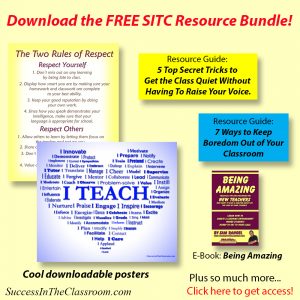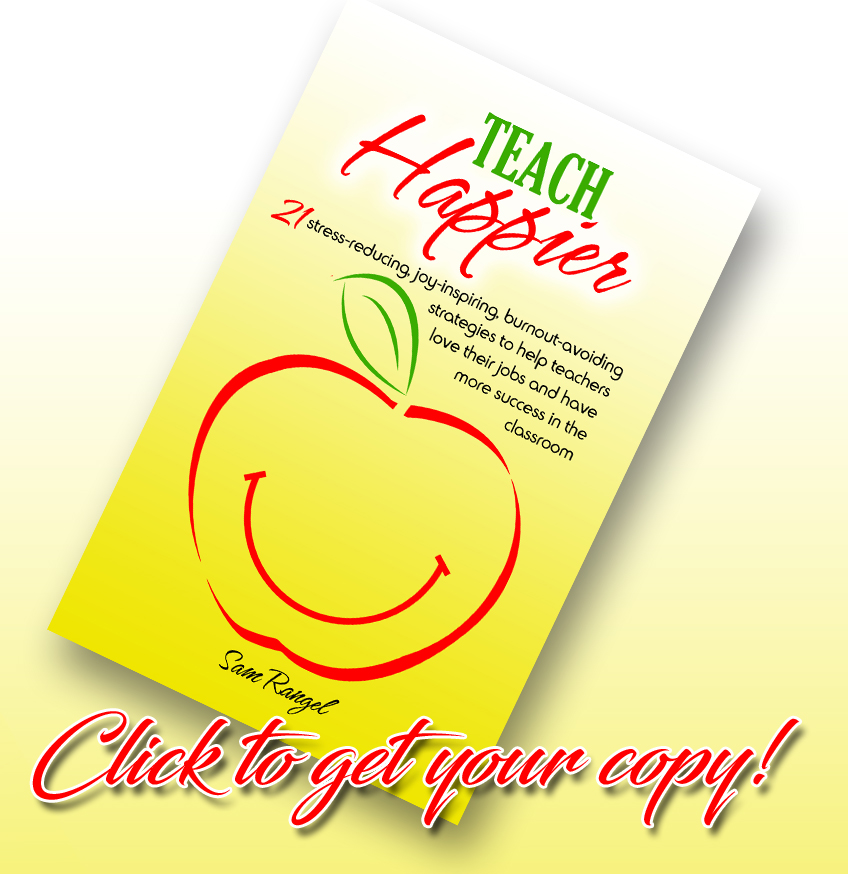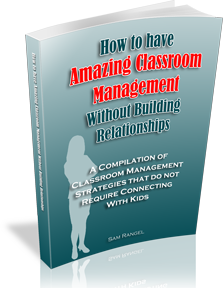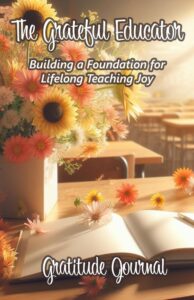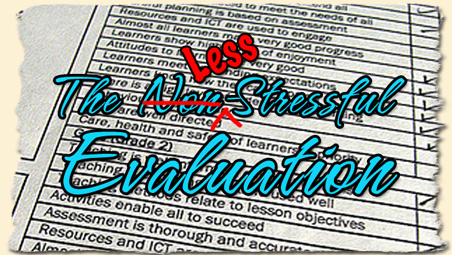
Hello again,
This post is part of my The Less Stressful Evaluation series. As I stated in my last post, I just had my post-observation meeting with my principal, and it went fine. She had no complaints or concerns about the lesson that she observed. Whew!
Even though I’ve been through a million of these observations, it’s still a little stressful to have to sit down with your superior and talk about your job performance.
In the beginning of my career, most of the focus was on keeping my class engaged and on task. Now that I’m in my 23rd year of teaching, however, I’m focusing on fine tuning my teaching skills, and although I’m at that point in my career where I’m confident with my abilities, there is always room for improvement.
This year, the evaluation process has become a little more detailed. Administrators are required to evaluate teachers based on some state standards that have been created.
In the following posts, I want to take these standards and discuss how you as a new teacher can find more success in meeting these goals. I would appreciate any help from other experienced teachers who would like to weigh in with their suggestions. I am the first to admit that I don’t know all the answers.
So here we go…
State Standard for Teachers #1: Engaging and supporting all students in learning
Under this standard, there are six subcategories:
1.1 Using knowledge of students to engage them in learning
1.2 Connecting learning to students’ prior knowledge, backgrounds, life experiences, and interests
1.3 Connecting subject matter to meaningful, real-life contexts
1.4 Using a variety of instructional strategies, resources, and technologies to meet students’ diverse learning needs.
1.5 Promoting critical thinking through inquiry, problem solving, and reflection, and
1.6 Monitoring student learning and adjusting instruction while teaching
In each of these subcategories, I was given a score of U- Unsatisfactory, E – Emerging, P – Proficient, or A – Advanced.
Thankfully, I was given either a P or an A in each of them.
The whole point of this standard is to encourage the teacher to get to know their students, and use this knowledge to make the information more relevant and engaging. I’ve said it before, anyone can teach from the textbook. It’s easy to teach from the textbook. The only problem with teaching from the textbook is that you’re not taking the students’ prior knowledge, background, life experiences or interest into account to make that information interesting for the student. Why? Because the textbook doesn’t know your students. It’s written for the typical student, and you probably don’t have any “typical” students in your classroom.
What I tell all my student teachers is to read the textbook to find out what the kids have to know. Then, use the students’ experiences to make that information relevant.
For example, when I teach about the American Revolution, I tell my students that the colonies and England were once one country, but then the colonies declared their independence, and after a war, they won the right to be their own country. The students have to know this, but explaining how this happened isn’t really relevant to 8th graders until I compare it to something that they can understand.
I tell them that it’s like when a boy and a girl start dating. Now I have their attention.
In the beginning, things are beautiful. He calls her every evening. They spend all day at school together. At the end of each call, she tells him, “You hang up first.” Then he says, “No you hang up first.” They’ll spend the next 30 minutes not hanging up first.
Then little things start happening that begin to strain the relationship. He’ll stop calling every night. She’ll start talking to other boys. He’ll hang up first.
Eventually, the relationship will end in a break up.
That’s when I connect it with the “break up” of England and the colonies. Little events (The Stamp Act, The Tea Act, The Boston Massacre, The Boston Tea Party, The Coercive Acts, The Battle of Lexington and Concord) eventually led up to American Independence.
This is how you engage your students – connecting the content with their personal lives.
This will satisfy standards 1.1, 1.2, and 1.3.
I make sure to remind them that dating in the 8th grade is a bad idea.
Standard 1.4 can be met by including PowerPoint, the LCD projector or an overhead projector, streaming videos, etc. to your lessons. Again, your goal is to engage students. It’s difficult to do this with just the textbook.
Standard 1.5 can be met by adding a question and answer element to your lesson. This should be part of any quality lesson plan, but as the teacher, you need to make sure that some of the questions are the kind that force students to think a little. Asking guessing questions or yes/no questions is good too, because you can get more students involved. It’s easy to guess. Your goal, however, should be to stretch their minds a little with higher-level thinking questions.
Standard 1.6 can be met by just listening to the students. If there a lot of questions or blank stares, it’s probably because your lesson was beyond their level of understanding. You have to be willing to stop and start from the beginning. I’ve seen too many of my student teachers rush through a lesson just so they can finish it before the period ends, without even checking to see if the students were getting it.
This first set of standards is basically asking the question: Is my lesson connecting the content with the students’ lives?
If you center your lessons around what’s important to the students, then you’ll have more of their attention and they’ll be more engaged.
I heard someone once say, “Students who are engaged in the lesson are students who are learning.”
I agree.
Come back tomorrow (or the next day), and I’ll discuss Standard #2: Creating and Maintaining Effective Environments for Student Learning.
Until then, don’t forget to subscribe to my RSS feed.
Thanks,
Sam
